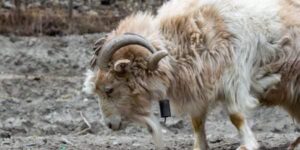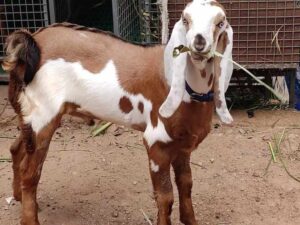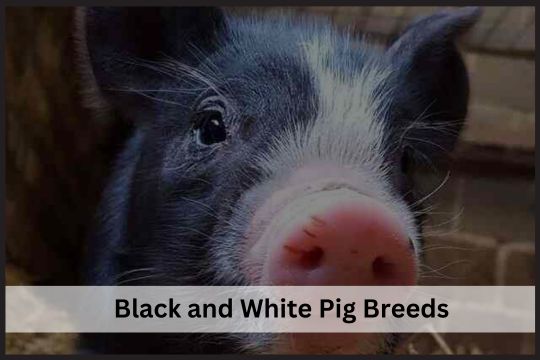Goat Farming In Nepal
Nepal-Being an agricultural country-a large part of its population is involved in livestock farming such as Goat farming, Pig farming, Poultry farming and other Cattle Farming. Among these all, goat farming in Nepal is at top position.

Among all of these livestock farming, Goat farming is very popular because of its low investment, fast results and high profit.
people are involved in Goat Farming either by commercial or subsistance way.
Do You Know:- Goat is the first animal to be domesticated by man.
In earlier days, people used to keep (1-2) goats in a family. They weren’t doing it commercially.
But, the scenario has changed now. People have become aware of the potential of goat farming and now in present situation goat farming has commercialized contributing to 5% of AGDP of Nepal.
Here, In this article – We will be learning about goat farming in Nepal along with its importance, prospects and challenges in Nepali society.
Goat is a multi-purpose livestock which is helping to uplift the socio-economic condition of Nepalese people along with making the country independent on meat production.
There are many examples of success in goat farming that we see in our society. It has also help to make woman independent. Many mens left their job of foreign country started their goat farm and they are doing well.
Data Related To Goat Farming In Nepal
According to the data of 2073/74 provided by Department Of Livestock Services, there are 10,986,114 goats in Nepal.
This population of goat accounts 45.3% of total ruminants which produces 20%(65,583 metric ton) of total meat production in Nepal.
According to the Ministry of Agriculture and Livestock Development, Agricultural sector contributes 27% to national GDP.
In 27 %AGDP, livestock production contributes 11% inside which goat farming alone contributes 5% grossing 49.2 million US dollars in national economy.
This data explains, people of all -Mountains, Hills and Terai region are involved in goat farming. As the climate of Nepal supports the goat farming, it has evolved as an enterprise.
Goat -Being popular as “poor man’s cow” or “living cheque,” it has significant contribution in Food, Nutrition along with upliftment of socio-economic condition of rural people and national economy of country. To know about, Goat farming in Nepal, We need to know the breeds that are raised by Nepali people. Here are top breeds:-
Breeds Used For Goat Farming In Nepal
Goat farming- source of income and nutrition to many Nepalese family needs to be improved and commercialized with high yielding breeds.
Mainly, people are rearing indigenous breeds along with some indigenous breeds crossed with exotic breeds like boar.
Indigenous breeds are less productive but are super adaptable to our climatic condition in comparision to exotic breeds.
On the other hand, Exotic breeds are attractive for their production though they can also adapt to our climate.
Indigenous Breeds Farmed In Nepal
There are mainly 4 indigenous breeds of goat reared from terai to mountain region of Nepal. These 4 breeds are explained below:-
1.Terai Goat

•They are found in terai plains and some valleys of Nepal.
•Terai goat occupies 27% of the goat population of Nepal.
•Body colour is white or black with mixed patches of different colours.
•They have compact body structure.
•They can give birth to 3 times in 2 years with 2 kids at each time.
•Body Weight:- Male=(30-35)kg
Female=(25-30)kg
2.khari

•They are mostly found in low land hills with an altitude of (300-1500)M.
•They can give birth to 3 times in 2 years with 2 kids at each time.
•They are hardy(Well-Adaptable) especially raised for their tasty meat.
•Khari is the principle goat breed of Nepal representing 50% of total goat population.
•The are locally called by different names depending upon their body coat colour such as Seti(Pure White), Kali(Pure Black), Khairi(Brown), Ghorli(Brown with other colour patches).
•They are less attacked by diseases (i.e Disease resistant) in comparision to other breeds.
•They don’t need balanced feed and can be reared with normal feed.
•Weight:- Male=(15-25)kg
Female=(25-35)kg
➡️Khari goat is at the number one among the breeds used for Goat farming in Nepal.
3.Sinhal

•They are found in high-hills and low-mountains at an altitude of (1500-2500)M.
•The body coat colour of sinhal goat is Black, White and Black.
•They represent 16% of total goat population of Nepal.
•They are heaviest among all indeginous breeds.
•They are reared especially for meat and transportation(Transhumance System).
•They are hardy and well adaptable to harsh climate.
•Body is covered with thick rough hairs. We can get about 200 gm of rough hairs in a year.
•Body Weight:- Male=42kg
Female=34kg
4.Chyangra

•Chyangra or Pashmina Goat are found in Mountain region at an altitude above 2500M.
•They are reared along with moutain sheep called Bhyanglung.
•Chyangra are reared for meat and a smooth fibre called Pashmina.
•They are frequently used for transportation and male can carry goods equivalent to 30% of its body weight.
•They occupies 1% of total goat population of Nepal.
•Their body coat colour varies from pure white to pure black along with patches of other colours.
•Body Weight:- Male=(35-40)kg
Female=(29-32)kg
These are the 4 main indigenous breeds of goat that are reared in Nepal. Some of these indigenous breeds like Terai and Chyangra are declining day by day. Proper conservation techniques should be applied to protect our native breeds.
Exotic Breeds Of Goat Farmed In Nepal
Along with indigenous breeds, People are now rearing exotic breeds for commercial production as they are highly productive. Goat farming in Nepal is getting popularity because of these highly productive exotic breeds.
Also Read:-
Damascus Goat: Characters, Baby And Price
Some of the exotic breeds of Goat reared in Nepal are:-
1.Jamunapari

•This breed is originated from Uttar pradesh of India near Jamuna river so called Jamunapari.
•Jamunapari is dual purpose breed used to produce both meat and milk.
•They have long pendulus ear with rumex nose(Parrot like nose).
•They have large body with long legs containing thick hairs at thigh region.
•Body coat colour is White, Black, Brown or mixed of them.
•Jamunapari give birth to one kid per year and gives about (2-3) litres milk per day.
•Body Weight:- Male=(65-80)kg
Female=(40-60)kg
2.Barbari

•Barbari goat is also originated from India.
•It has small, compact and robust body with short and standing ears.
•They have twisted horn directed upward and backward.
•They are not grazing type. They like to be stall-fed.
•Body coat colour is white with light brown patches in the body.
•They are especially reared for tasty meat.
•They gives birth to 4 kids in a single year.
•Body Weight:- Male=(25-40)kg
Female=(29-25)kg
3.Sannen

•Sannen is originated from Sannen valley of Switzerland.
•They are reared especially for milk production and also know as milk queen of the world.
•Body coat colour is white and covered with small hairs.
•They do not have any horns i.e polled breed.
•They are adaptable to both hot and cold climate.
•Sannen gives (3-4) litres of milk per day.
•Weight:- Male=(70-90)kg
Female=(60-70)Kg
4.Beetal

•Beetal goat is originated from punjab of India and Pakistan.
•Body coat colour is red or golden brown with white spots.
•They looks like jamunapari but are smaller in size.
•They are reared for both meat and milk.
•They give birth to 2 kids per year and produce (2.5-3.5) litres of milk everyday.
•They are hardy in nature and can easily adapt to different climatic condition.
•Weight:- Male=65kg
Female=45kg
5.Boar
Boar goat has become more popular in Nepal after 2016 because of its body weight. Boar goat is said to be originated from Africa.

Some characters of Boar goat are:-
•They have large white body with red head.
•Triplets and Quardruplets are common in boar goat.
•Boar goat are especially reared for meat as they grow faster and gain more body weight.
•They can gain the weight of 22kg(Female) and 25kg(male) within 100 days.
•Indigenous breeds crossed with boar goat also show very good production and can raised up to 2100M altitude.
•They can be stall-fed as well as can be grazed in open.
•Boar and Boar cross has high disease resistant capacity.
•Weight:- Male=120kg
Female=80kg
Thus, This is all about the breeds used for Goat farming in Nepal, Let’s have a look on Importance, Prospects and Challenges of this farming business.
Importance Of Goat Farming In Nepal
1.Goat farming in Nepal has helped to uplift the socio-economic condition of owner as well of as the other people by creating employment opportunities.
2.Large number of goats are imported from India. Goat farming can play important role to end this and make country self reliant in meat production.
3.Goat meat has great nutritional importance. The nutritional value of goat meat is shown below:-
In goat meat (chevon)-We can find:-
— 76.8% water
— 2.6% fat
— 19.6% protein and
— 1% minerals
As Goat meat has low quantity of fat and high protein, it is considered beneficial to our health.
4.We need large number goats during our festival time, commercial goat farming is important to fulfill this demand.
5.There are no roads in upper mountains. In this scenario, goats(chyangra) can be the source of transportation.
6.Furthermore, goat farming can helps to protect our indigenous breeds to some extent.
Prospects Of Goat Farming In Nepal
Nepal is country which has great potential of goat farming and making it commercial and self-sustainable.
Some of the prospects of goat farming in Nepal are:-
1.Climatic diversity of Nepal helps us to farm all the breeds of goat without any difficulties.
2.We have many barren and green lands full of grasses which can be feed for our goats and it will reduce our investment and increase our profit.
3.The demand of chevon(goat meat) is high and we have easy access to market with good price.Nepal imports meat and live animals(goat) worth Rs.5 billion annually. This shows we can produce more and more.
4.Nepal is land of festival. In those festivals the demand is very high and it encourages people to start commercial goat farming.
Challenges Of Goat Farming In Nepal
In every sector, there are some challenges to be faced. Goat farming in Nepal is also facing some problems which are explained below:-
1.Government doesn’t formulate any law and plans regarding goat farming. If it formulates, it remains only in paper.
2.Farmers are taking risk of buying productive breeds from abroad with high price.
3.Lack of subsidy to proper goat farmer without any difficulties.
4.Lack of investment and inadequate scientific research.
5.Poorly developed market chain.
6.Lack of institutional and governmental support in goat farming.
Final Verdict
Goat farming in Nepal has got immense potential but the problems intangling the development of commercial goat farming needs to addressed.
Government should encourage farmers and youths to involve in goat farming by providing different attractive packages.
There should be made proper research on goat farming and should try to increase the production of our indigenous breeds also.
This is whole information on Goat Farming In Nepal along with its importance and challenges.
Also Read:-
Thank You For Visiting ❤️!!

